Articles of 2005
Hurricane can't wash away New Orleans' boxing history
It has been more than a week and the devastation that Hurricane Katrina has wrought upon New Orleans still cannot be fathomed. How can one begin to tally losses when there are still homes underwater and people being rescued?
The grim reality will arrive soon enough. The loss of human life will be numbing. The amount of survivors left homeless will be staggering. The costs to repair damaged property will be astronomical. The loss of the city’s soul – the French Quarter, Bourbon Street and the beautiful Plantation homes on River Road – may be immeasurable.
This was the place where Southern Elegance met Mardi Gras decadence. It was The Big Easy, but nothing may ever come easy to New Orleans again.
Of course, to a far lesser degree, there is the loss of athletics. Officials are estimating that it will be 30 to 60 days before the city drains. Only then, will reconstruction begin. Only then will one ponder where to play the games. For now, the New Orleans Saints will play elsewhere and the NCAA is already considering a new home for the Sugar Bowl.
Buddy Embanato, the chairman of the Louisiana State Boxing Commission, canceled a fight card scheduled for the PontchartrainCenter the Saturday before Katrina struck and can’t imagine a boxing show in New Orleans for the remainder of the year.
“People have been saying for a decade that a category four or five hurricane would ruin New Orleans,” said Embanato. “People predicted that the levees would break. The city is under sea level. What happened doesn’t surprise me. I can tell you that all the gyms in New Orleans are destroyed. The small gyms, where the kids go to start out, they are gone.”
Embanato lives in Monroe, Louisiana, in the Northeast corner of the state, about four hours from the devastation. It was more than a week after the storm before all of his referees, inspectors, judges and officials in the New Orleans area were accounted for. Thankfully, they all survived. Sadly, he does not have an update on most of the city’s fighters or their whereabouts. Right now he has four evacuees staying in his home. “You do what you can with what you got,” he said.
New Orleans lost its grip on the fight game well before Katrina, giving way to small fight clubs and Indian casinos throughout the state. There was only one fight card in the city last year and two were scheduled for later this year that Embanato says have already been canceled.
The last major card in New Orleans was Roy Jones Jr. light heavyweight title defense against Eric Harding in 2000. Even then, the weather left an impression on an outsider in town for the fight.
“I was in New Orleans for that fight,” said Harold Lederman, a New Yorker and HBO’s fight judge. “It was raining like heck, there were cars floating down the street. The drainage is so poor in New Orleans. I could see something like this coming. It’s one of the great American disasters.”
In the immediate aftermath of Katrina, the Louisiana Superdome, the proud symbol of the city’s sporting culture, was used as a shelter for thousands of people displaced from their homes by the rising floodwaters.
As the evacuation effort stalled, tails of horror emerged from the Superdome. The storm ripped off portions of the roof and, without electricity, the lack of air conditioning left those seeking refuge to endure sauna-like conditions. As the days passed, toilets inside the arena backed up and the stench of human waste was inescapable. Still, the news got worse. Television stations and newspapers reported alleged murders and rapes inside the dome as marauding gangs harassed those seeking shelter.
The Superdome, home of the NFL’s New Orleans Saints, has hosted six Super Bowls, four Final Fours and the Sugar Bowl over the course of its 30-year existence. One of the nation’s most prestigious sports venues turned into a house of horrors.
Boxing would make an impact during the dome’s early years. On September 15, 1978, Muhammad Ali became the first man to win a portion of the heavyweight title three times when he defeated Leon Spinks. The card also featured three other world title fights, with Danny Little Red Lopez, Mike Rossman and Jorge Lujan victorious that night.
“I was in the Superdome for the Ali-Spinks fight,” said Fielding Lewis, a member of the state’s boxing commission for 23 years. “It was packed. Between the seats, at the end of each aisle, people were standing. I had someone sitting on the arm of my seat. There were a pile of celebrities in the crowd. When Ali won, everyone tried to get down to the floor to get to Ali. That’s what Ali did to people. It almost got out of hand. They needed the state police to calm the crowd. But other than that one incident, the atmosphere for fights at the Superdome was great.”
“The tradition of the Superdome plays a big part of the mystique when you arrive in New Orleans for a fight,” said Lederman, who was once assigned a world title fight inside the dome. “And at that time I worked there, the dome wasn’t even that old. It was relatively new. It was brutally hot in New Orleans. But they had a heck of a crowd at the dome. It was an entirely different atmosphere. It wasn’t that antiseptic casino atmosphere. There was so much yelling and screaming. I thought it was great for big fights.”
In November of 1980, Sugar Ray Leonard earned his measure of revenge and cemented his reputation as a master boxer when he induced Roberto Duran to turn his back and utter “No mas” in the eighth round of their welterweight title fight. Two years later, Thomas Hearns decisioned Wilfred Benitez and Wilfredo Gomez knocked out Lupe Pintor in a title fight doubleheader.
“The Gomez-Pintor fight was the greatest fight I ever saw,” said Lederman, who judged that contest and had Gomez ahead before the bout ended. “It was the semifinal to Hearns-Benitez but to tell you the truth, after that fight, no one could watch Hearns and Benitez. It made them look dull. You had the reigning WBC 118-pound champion in Pintor against the reigning WBC 122-pound champion in Gomez. They were killing each other for 13 rounds. In the 14th round Pintor was counted out. I think he fell from exhaustion. Gatti-Ward was a great fight, Kennedy McKinney-Marco Antonio Barrera was a great fight, but nothing compares to Gomez-Pintor. These were two guys looking to kill each other.”
Prior to the salad days of Superdome boxing, the sweet science was a constant in Louisiana for decades. The state produced champions like Joe “Old Bones” Brown (lightweight title, 1956), Willie Pastrano (light heavyweight, 1963) and Ralph Dupas (junior middleweight, 1963) each of whom had title fights in New Orleans.
“Until recently, New Orleans always had great fights,” said Lewis, who is 74 and boxed in the Air Force. “The best fighter we ever had was Joe Brown. I used to go to the Coliseum Arena in New Orleans to see him fight. It was an old wooden building and the best thing about it is that the seats were built straight up. So no matter what kind of ticket you had, you had a great seat. It was so damn hot in that building. They used to bring in huge blocks of ice and cover them with canvas. People would sit on them to cool down.”
But the history of boxing in The Crescent City dates back over 100 years. If Madison Square Garden was once known as the Mecca of Boxing, that tag would certainly have fit New Orleans in the late 19th Century.
The centerpiece of the city’s boxing scene was the Olympic Club on Royal Street. It was founded in 1883 and within a decade had established itself as a major boxing venue. Although, boxing wasn’t an easy sell. At the time, prizefighting was outlawed in much of the United States. Private athletic clubs would skirt such legislation by staging exhibitions that required the combatants to wear gloves. The political landscape of the time painted the sport as barbaric and immoral, but even then New Orleans was a bit more tolerable when it came to vices. Boxing seemed a natural for this country’s original “Sin City.”
On March 14, 1890, the New Orleans city council authorized boxing under the Marquess of Queensberry Rules. Soon after, members of the Olympic Club challenged another law that prohibited fights contested for a purse and waged until a finish. When the membership won this legal battle the last hurdle had been cleared and the club’s 3,500-seat arena was free to charge admission for a professional prizefight.
The first major bout occurred on January, 14, 1891, when Bob Fitzsimmons knocked out middleweight champion Jack “Nonpareil” Dempsey over 13 brutal rounds to win the first of his three world titles. While the fighting was legal, the New Orleans police still monitored the crowd to enforce laws against betting and drinking alcohol.
The success of the Fitzsimmons-Dempsey fight led to the greatest show in New Orleans boxing history and arguably one of the greatest three-day periods in boxing. The heavyweight title fight between James J. Corbett and John L. Sullivan would be staged at the Olympic Club on September 7, 1892. It would be the first time a heavyweight championship bout would be contested with participants wearing gloves.
And while landing the historic heavyweight fight was a major coup for the city, the promoters upped the ante by staging three days of championship boxing. It would become known as boxing’s first “Carnival of Champions.” [Some 90 years later, Don King would borrow the nickname for his Hearns-Benitez and Gomez-Pintor card in the Superdome.]
To prepare for the event, organizers renovated the Olympic Club so it was completely wired with electricity and the seating capacity was increased to accommodate 10,000. Still, the high society types looked down from their plantation mansions and voiced moral objections to the event. The local press editorialized that hosting the bouts would do little to diminish the area's reputation as a “city of sin.” But the fights were a boon to the local economy. One railroad sold 3,000 tickets to people attending the fight from out of state and saloons, brothels, hotels, and bookmakers profited nicely from the fight crowd.
Leading off the extravaganza on September 5, lightweight champion Jack McAuliffe retained his title by defeating Billy Myer. Then, on the 6th, featherweight champ George “Little Chocolate” Dixon knocked out Jack Skelly in eight rounds. It marked the first time African-American fans were allowed to attend fights at the Olympic Club.
Then came the main event and Corbett made history by upsetting Sullivan with a boxing display worthy of Sugar Ray Leonard almost a century later. The difference, Sullivan went on his shield while Duran did not. Corbett, a 4-1 underdog, ruined the Sullivan-McAuliffe-Dixon parlay bet and cost fight fans thousands of dollars. And if the Carnival of Champion was indeed a three-day carnival of excess and indulgence, it clearly established New Orleans as the fight capital of that time period.
The Olympic Club is no more, gone long before the devastation of Katrina. In a local park, there is a statue near the site that commemorates the early days of boxing in New Orleans. Like much of everything else, it is underwater.
The next fight card in the state of Louisiana will take place in the city of Kinder on September 17 with DeMarcus Corley in the main event. “That is just far enough inland,” said Embanato. “I just got the fight fax information on all the fighters. That card will come off.”
He paused a moment to think about the future of boxing in New Orleans. It may never rival its glorious past. But he was confident that it will return.
“I promise you, as soon they find a building, they will have boxing matches in New Orleans,” said Embanato. “Some of these people are really, really in a world of hurt. We’re scratching and clawing. But we’re going to get through it. If I could chose anyone in the world to be in a foxhole with me, I’d take someone from New Orleans. They’re just tough. People in New Orleans are a special breed.”
-
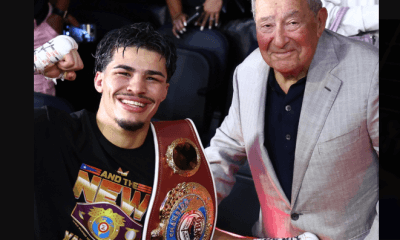
 Featured Articles3 weeks ago
Featured Articles3 weeks agoThe Hauser Report: Zayas-Garcia, Pacquiao, Usyk, and the NYSAC
-
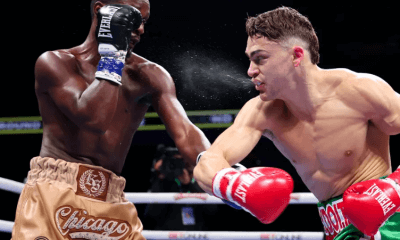
 Featured Articles2 weeks ago
Featured Articles2 weeks agoOscar Duarte and Regis Prograis Prevail on an Action-Packed Fight Card in Chicago
-
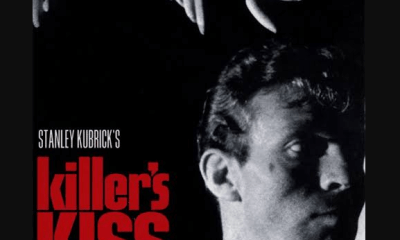
 Featured Articles2 weeks ago
Featured Articles2 weeks agoThe Hauser Report: Cinematic and Literary Notes
-
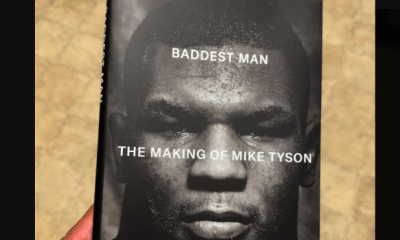
 Book Review1 week ago
Book Review1 week agoMark Kriegel’s New Book About Mike Tyson is a Must-Read
-
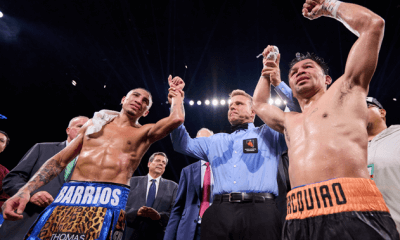
 Featured Articles4 weeks ago
Featured Articles4 weeks agoArne’s Almanac: Pacquiao-Barrios Redux
-

 Featured Articles3 weeks ago
Featured Articles3 weeks agoRemembering Dwight Muhammad Qawi (1953-2025) and his Triumphant Return to Prison
-
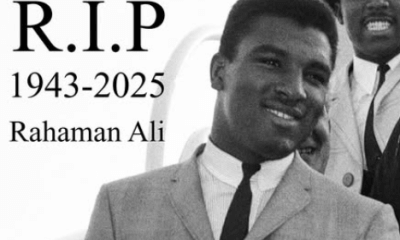
 Featured Articles2 weeks ago
Featured Articles2 weeks agoRahaman Ali (1943-2025)
-
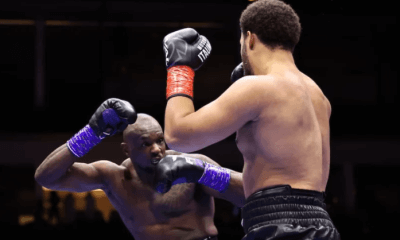
 Featured Articles3 days ago
Featured Articles3 days agoMoses Itauma Continues his Rapid Rise; Steamrolls Dillian Whyte in Riyadh













